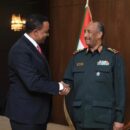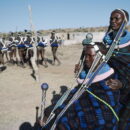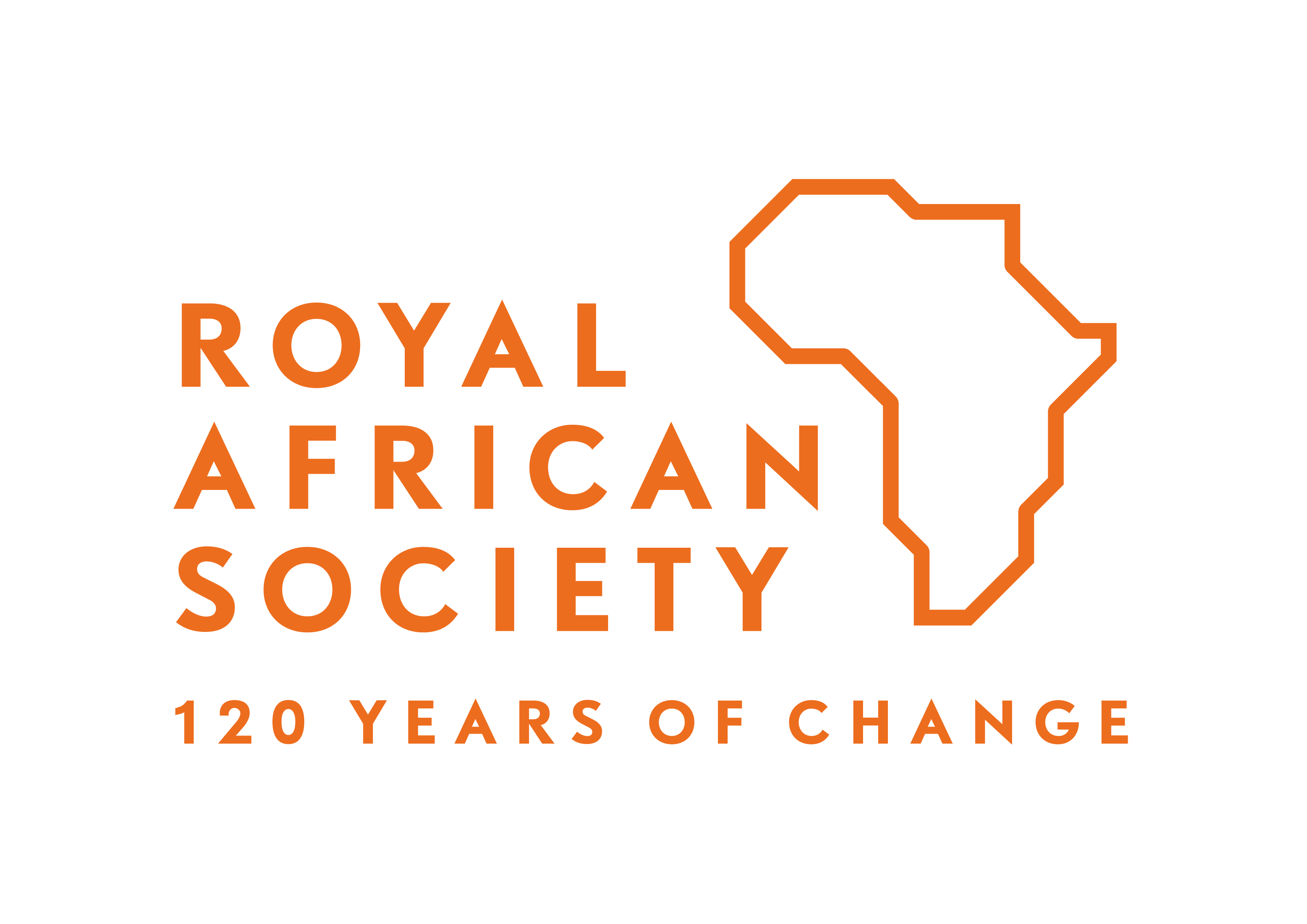Darfur: The Stakes of the Label ‘Genocide’
 Darfur and the Crime of Genocide is an ambitious and in places interesting book that makes some important contributions. The core contributions concern the detailed analysis of the results from the 2004 Atrocities Documentation Survey (ADS) that was commissioned by the U.S. State Department. The authors make a good overall point that the discipline of Criminology should pay greater attention to international human rights crimes, such as genocide. The book also presents an intriguing, if ultimately limited””for reasons discussed below””theoretical interpretation of the causal dynamics of genocide. The core contributions are found in Chapters 5, 6, and 7, as well as in the statistical appendix. However, the book has several significant drawbacks and problems that I discuss below.
Darfur and the Crime of Genocide is an ambitious and in places interesting book that makes some important contributions. The core contributions concern the detailed analysis of the results from the 2004 Atrocities Documentation Survey (ADS) that was commissioned by the U.S. State Department. The authors make a good overall point that the discipline of Criminology should pay greater attention to international human rights crimes, such as genocide. The book also presents an intriguing, if ultimately limited””for reasons discussed below””theoretical interpretation of the causal dynamics of genocide. The core contributions are found in Chapters 5, 6, and 7, as well as in the statistical appendix. However, the book has several significant drawbacks and problems that I discuss below.
The book’s core argument is that genocide was committed in Darfur and that the “Sudanese State” is responsible. The central evidence supporting the claim concerns the frequency of racial epithets that victims heard during attacks in 2003 and 2004, as recorded in the ADS survey. The authors further triangulate the ADS evidence with human rights and journalistic accounts. From the apparent prevalence of racial epithets, as well as evidence that the claims were more frequent when government soldiers attack alongside janjawiid militia forces, the authors argue several points. First, they infer that the government is responsible for what the authors call collective racial intent, which the authors see as a critical element of genocide. The authors also criticize U.S. foreign policy as ambivalent on the claim of genocide, and the authors challenge public health models of documenting war crimes, arguing that a criminological approach is superior. Second, the authors advance a theory of genocide centered on individual and collective racial categorization and instigation. Along the way, they present a schematic account of the history of Criminology and draw on scattered elements of scholarship in the discipline to support their theory.
In advancing the first set of points, the authors demonstrate two sets of limitations. The first is that the authors sidestep a series of significant but crucial questions. For example, overall the authors make a reasonable and to my mind persuasive case that genocide has occurred in Sudan””at least for the period in question (more below). However, the bigger question at this stage is, what are the stakes and, more explicitly, what are the risks of emphasizing the genocide label with regard to Darfur? From 2004 onwards, the Darfur case has demonstrated striking limits to focusing debate on whether “genocide” is the appropriate term. The limits are that a) the term is contested and, in places, ambiguously defined so that insisting on the term when the supporting evidence is not absolutely clear-cut is a recipe for disagreement and inaction; and b) the added leverage of employing the “genocide” label is minimal. One can argue that the label attracts more attention, but with the risk that the label also generates considerable debate and resistance, in turn leading to a focus on terminology. From a prevention policy perspective, the label does not add significant firepower, given ambiguities in the Genocide Convention. If Responsibility to Protect is the doctrine on which a prevention claim is based””and the authors invoke R2P””R2P explicitly broadens actionable atrocity crimes beyond genocide. Similarly, with regard to a justice policy perspective, if the International Criminal Court’s Rome Statute is the foundation for international criminal justice, it too does not require genocide to be a jurisdictional requirement. In short, the authors here reopen the genocide debate, but they do not sufficiently address why the debate is important and they do not seem to be aware””at least as evidenced by the writing in the book””of the risks associated with insisting on the genocide label. My point is not that the genocide label is inappropriate, but rather that focusing attention on the terminological debate carries major risks with few benefits. In other words, the terminological debate strikes me as a dead-end.
Another question that the authors largely sidestep concerns the limits of the ADS data””of which, I should state clearly, I am a fan. The only discussion I found is a few sentences on p. 190. The most obvious limitation of the data for the broader discussion in the book concerns time period. The data effectively concerns violence that occurred in 2003 and 2004. Many close observers of the patterns of violence in Darfur conclude that the period in question was one of, if not the, most intensive period of violence. That means that while a genocidal pattern of violence may be in evidence then, it is not clear that a similar pattern occurred in 2005, 2006, 2007, 2008, and early 2009. The authors thus fail to contextualize the temporal bounds on their data and the implications of such temporal bounds. Another obvious limitation is the sample””the ADS surveyed refugees outside Darfur, and those refugees came from certain areas in Darfur. Even if the researchers who conducted the survey were professionals””a point the book’s authors emphasize””the analysis should account for systematic biases that refugees can introduce into the data. These limitations do not negate the ADS results; however, given the centrality of the data to the book, the potential problems with the data needed greater discussion, analysis, and interpretation.
A second set of problems relates to depth of analysis and speculation. Perhaps the point is best made through examples. In Chapter 2, the authors claim to consider why the United States has an “obstructionist” and “ambivalent” relationship to international law; the book is said to explain such ambivalence (p. 32). However, there is no clear explanation in the book, and the question is not dealt with in a serious and complex fashion or with an appreciation of the large International Relations and International Law literatures on these questions. Furthermore, the authors’ characterizations of U.S. Cold War and post-Cold War positions strike me as simplistic. Contrary to claims on p. 45, for example, the U.S. was not clearly obstructionist toward the ICTR or the ICTY. If the authors believe that the U.S. was, then they should have supplied more evidence. (In general, the U.S. has supported ad-hoc criminal courts as an alternative to the ICC.) Similar points can be made about the discussion of U.S. “flip-flop” diplomacy in the book. Is a book purporting to document and provide theoretical insight into genocide in Darfur really the place for a discussion of U.S. foreign policy? Another example is that the authors speculate about why two scholars””Raphael Lemkin and Sheldon Glueck””had different life spans, attributing the difference to how much time each devoted to international law (p. 46). I do not see a solid foundation for this claim. On p. 49, the authors claim that racial, ethnic, and religious prejudice were not emphasized in the study of war crimes and genocide””yet, it is precisely prejudice and hatred that form a mainstream, common wisdom approach to the causes of genocide and mass violence. Indeed, in many of the seminal comparative genocide texts by Leo Kuper and Helen Fein, among others, exclusion, division, and prejudice are seen as crucial building blocks of genocide. On p. 110, the authors claim that, “In Africa, changed identities are often linked to outbreaks of violent conflict.” That is not a defensible statement, unless the word “often” and “changed identities” are so couched as to render the statement meaningless. I also found the comparison between Darfur and the United States in Chapter 8 ill-conceived. Can the authors really support the claim of a “parallel exclusionary process” in the U.S. and Sudan (p. 204)? These are but some examples of a general pattern of superficial analysis that mar several of the book’s chapters.
The second major argument in the book concerns the development of what the authors present as a criminological explanatory model of genocide, built largely on an analysis of genocide in Darfur. The model is most explicitly developed in Chapter 7 and illustrated on p. 164. The authors label the causal process as the “transformation model of genocide,” and the model is built around the importance of race and racialist ideology, as providing the key “spark” to genocide. Let me start this discussion by saying that I found Chapter 7, as well as Chapters 5 and 6 where mobilization dynamics are discussed, to be the most interesting parts of the book. There are fairly few theoretical models of genocide that account for time and for micro, meso, and macro-level processes. Thus, the authors’ contribution is welcome. That said, there are several limitations to the model and the evidence on which it is based.
First, with regard to the model itself, the authors should have better clarified sequencing and timing. For example, how is it that State-led Arabization Ideology, dehumanization, and Arab-Islamic Supremacism (all listed as first-stage factors) could lead to socially constructed and locally organized groups, as the model indicates? Socially constructed groups would seem to logically precede group-based ideology. Moreover, the causal mechanism or mechanisms driving the process from one stage to the next are not clearly specified. Second, there are problems with conceptualization. In the model’s Stage 3, for example, the authors note “collectivized racial intent” and a “genocidal state.” Yet, with regard to the latter, the “state” is not a uniform entity in Sudan, and clearly not all aspects of the Sudanese state were engaged in the violence in Darfur. The authors should have clarified what the “state” means explicitly in their model. Similarly, “collectivized racial intent” is a bit vague in the model and throughout the book. What specifically is the objective of collectivized racial intent? Intent must have a purpose. Third, the authors’ presentation of their model is absent an extended engagement with other theories of genocide and alternative explanations; as a result, the model would appear to have many missing variables. For example, the authors do not provide much analysis of the role of armed conflict, regime type, and state capacity””all generally considered to be important factors in studies of genocide. Of these, only armed conflict gets some attention in the book. Here, however, the authors seem to conclude that the dynamics of armed conflict mattered relatively little to the outcome they are explaining because in the ADS survey most respondents claimed that rebels were not present in the places where government forces attacked. But that is not the point of those who link armed conflict causally to mass violence and genocide: rather, the point is that once government forces are engaged in an armed conflict, they will take measures and derive strategies that are unlikely outside the context of armed conflict. Such measures and strategies may in turn have a powerful effect on increasing the intensity of violence against civilians. Fourth, in the book there is a great deal said about mobilization dynamics without a great deal of empirical specificity about mobilization dynamics. The model is based empirically on eyewitness claims or victims’ hearsay (as recorded in the ADS survey); almost by definition, targets of violence are not usually good sources of empirical data for how perpetrator mobilization dynamics take hold. The authors also quote local leaders’ speeches, but again there is minimal specificity about how such speeches manifested concretely in terms of recruitment, mobilization, and attack coordination. To be fair, data on perpetrator mobilization dynamics are hard to generate, but the empirical limitations of what the authors did have should have received greater attention.
Two final points should be made with regard to the authors’ emphasis on “race” throughout the book. The first is simple but important: there is not much discussion in the book of what the construct of “race” means in Darfur (or Sudan for that matter). The authors seem to infer that the construct of “race” as commonly understood in Western scholarly discussions would apply to terms such as “blacks” that were used in attacks in Darfur. That interpretation may be valid; on the other hand, given the centrality of “race” to the book, a more nuanced and anthropologically informed discussion of what race means or what the term “black” means in a Darfuri context should have been included. Finally, but perhaps most importantly, the authors make a major causal claim about collective racial intent. They claim that, “Racism operated as a collective instrument of organized terror that amplified the severity of this genocidal victimization in Darfur” (p. 190). The empirical foundation for this and other similar claims throughout the book is the frequency with which “racial epithets” were heard during attacks. Again, the interpretation may be valid””namely, that racism was a “spark” that amplified the severity of violence. But other interpretations are certainly possible, and indeed the causal arrow could have flowed in a different direction. That is, the racial language heard during attacks could have been the product, not the cause, of attacks and extreme violence in Darfur.
In conclusion, Darfur and the Crime of Genocide is a welcome addition to the growing literature on Darfur. However, the book would have benefited from greater focus and critical discussion of its core claims.
Scott Straus is professor at the Department of Political Science, University of Wisconsin, Madison







Yawn….more half-baked intellectual indulgence from the US. Wisconsin? The location of the author (many time zones away from Sudan) says it all and, most importantly, shows the limitations of basing analysis of Darfur and Sudan generally on secondary (or even tertiary) data and informational sources.
Ibrahim Adam,
Country Risk Consultant
El Fasher, North Darfur, Sudan